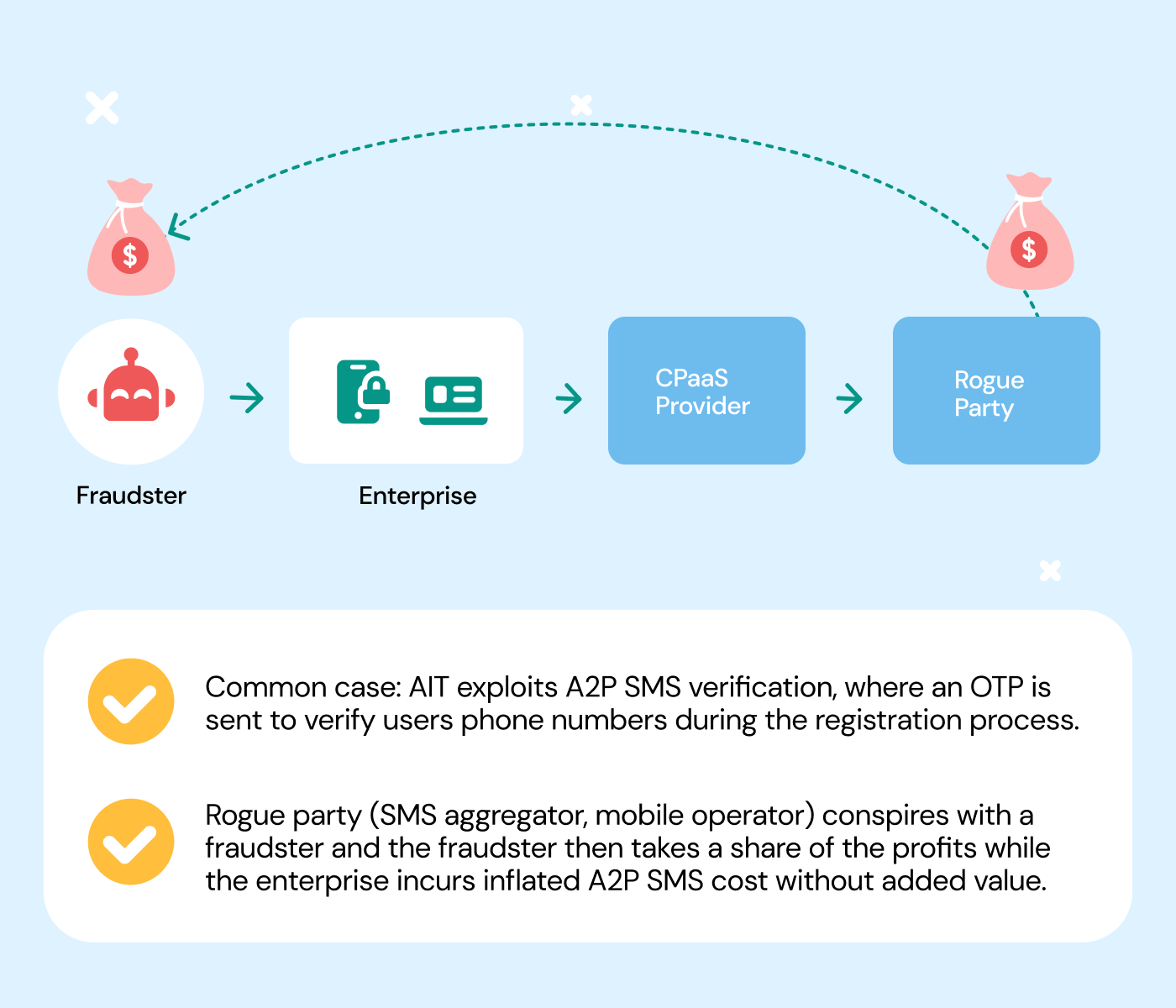Fraud and security, Insights, Operators
Artificial Inflation of Traffic (AIT): A growing threat to the messaging ecosystem

Fraud and security, Insights, Operators

The world of A2P messaging is complex. It involves various actors, gateways, and protocols, all set up to ensure users receive communications intended for them. Navigating such a complex ecosystem isn’t easy and leaves room for fraudsters to take advantage. One fraudulent scheme, called Artificially Inflated Traffic (AIT), has been gaining momentum under the radar without apparent cause for concern for enterprises — until now.
AIT is a type of SMS fraud that generates high volumes of fake traffic via mobile applications or websites. According to recent Mobilesquared findings presented at the MEF Global Forum, the biggest threats to messaging in 2022 were grey routes, AIT, and SMS phishing – with AIT projected to take the lead in 2023.
A common AIT scenario looks something like this:
As the owner of the application, you’ll likely be stuck paying the bill as messages were delivered. It’s common for fraudsters to inflate traffic to long-distance locations because international destinations with high delivery costs yield the most profit.

There are three main factors explaining the rise of AIT fraud:
The primary impact is financial. There are significant profit losses associated with AIT fraud for enterprises. Twitter, for instance, is reported to have lost $60 million per year to AIT.
AIT fraud could go on completely undetected and become apparent only after comparing message volume delivery to projected returns.
Brand reputation could also be at risk as businesses could be perceived as illegitimate and non-compliant by their customers. If a user receives multiple OTPs that they didn’t request, they’ll likely question the business’s integrity.
But businesses aren’t the only ones standing to lose; AIT is an issue for the entire messaging ecosystem, threatening operators and message providers alike. With the rise of SMS rates and new regulation procedures, brands are starting to consider other channels. Mobile operators also risk losing A2P SMS revenue because brands are shifting to other authentication methods.
Although there isn’t a specific playbook on fighting AIT, businesses can implement a few prevention and detection methods that can significantly reduce the number of fraudulent attacks:
Businesses should:
Operators should:
As a cloud communications leader, Sinch is committed to following the highest standards for transparency and accountability. That’s why we work with customers to reduce the risk of AIT:
Sinch is a Business SMS Code of Conduct Signatory under MEF’s Trust in Enterprise Messaging (TEM) — that means we help accelerate market clean-up and educate business messaging solution buyers about the threats associated with fraudulent practices and poor procurement processes.
We also keep our chain of trust as short as possible, with over 600 direct carrier connections to operators, actively monitor conversion rates, and take a legal stance when we have sufficient evidence to inform our suppliers. Learn more about our fight against fraud in SMS.